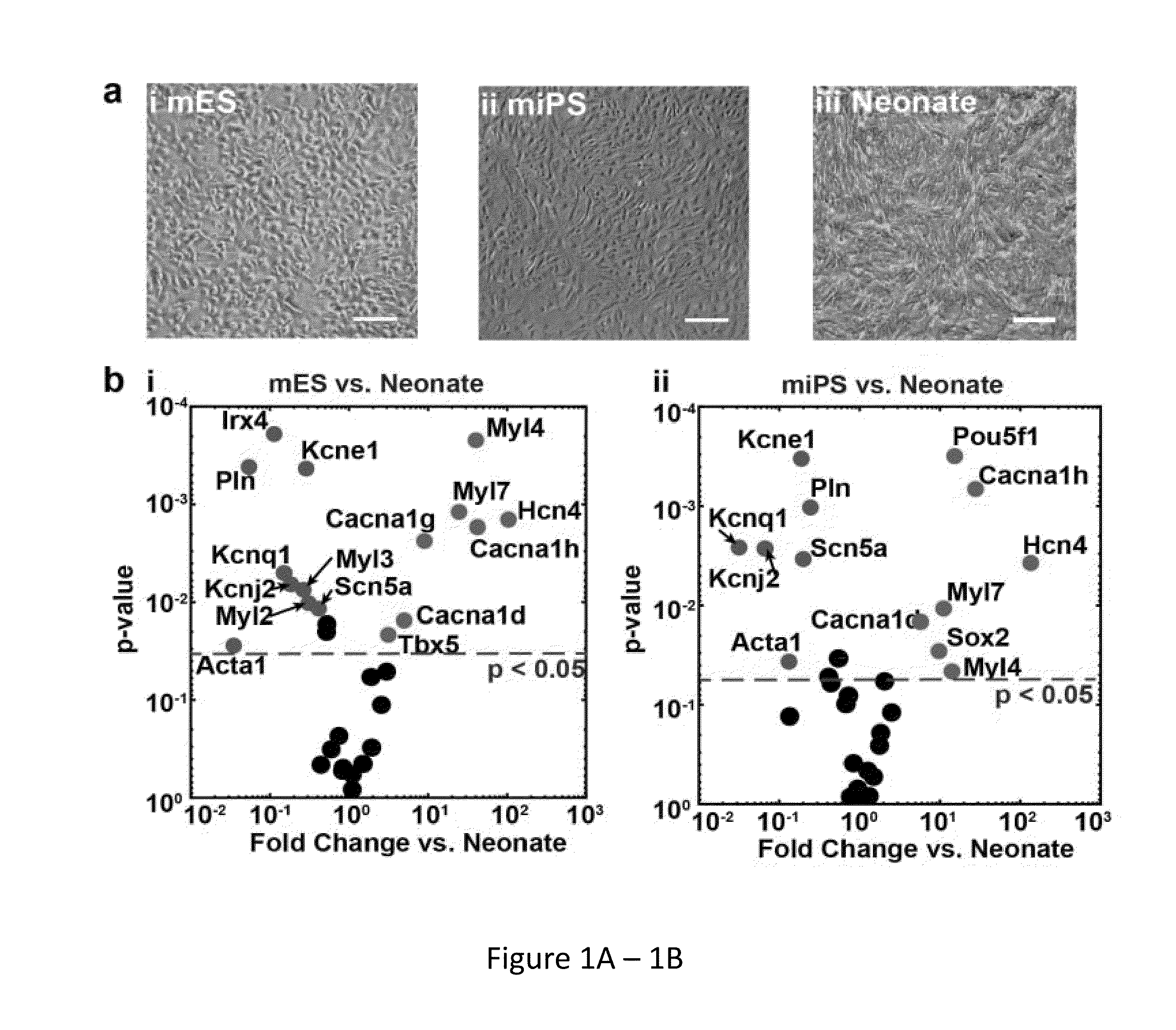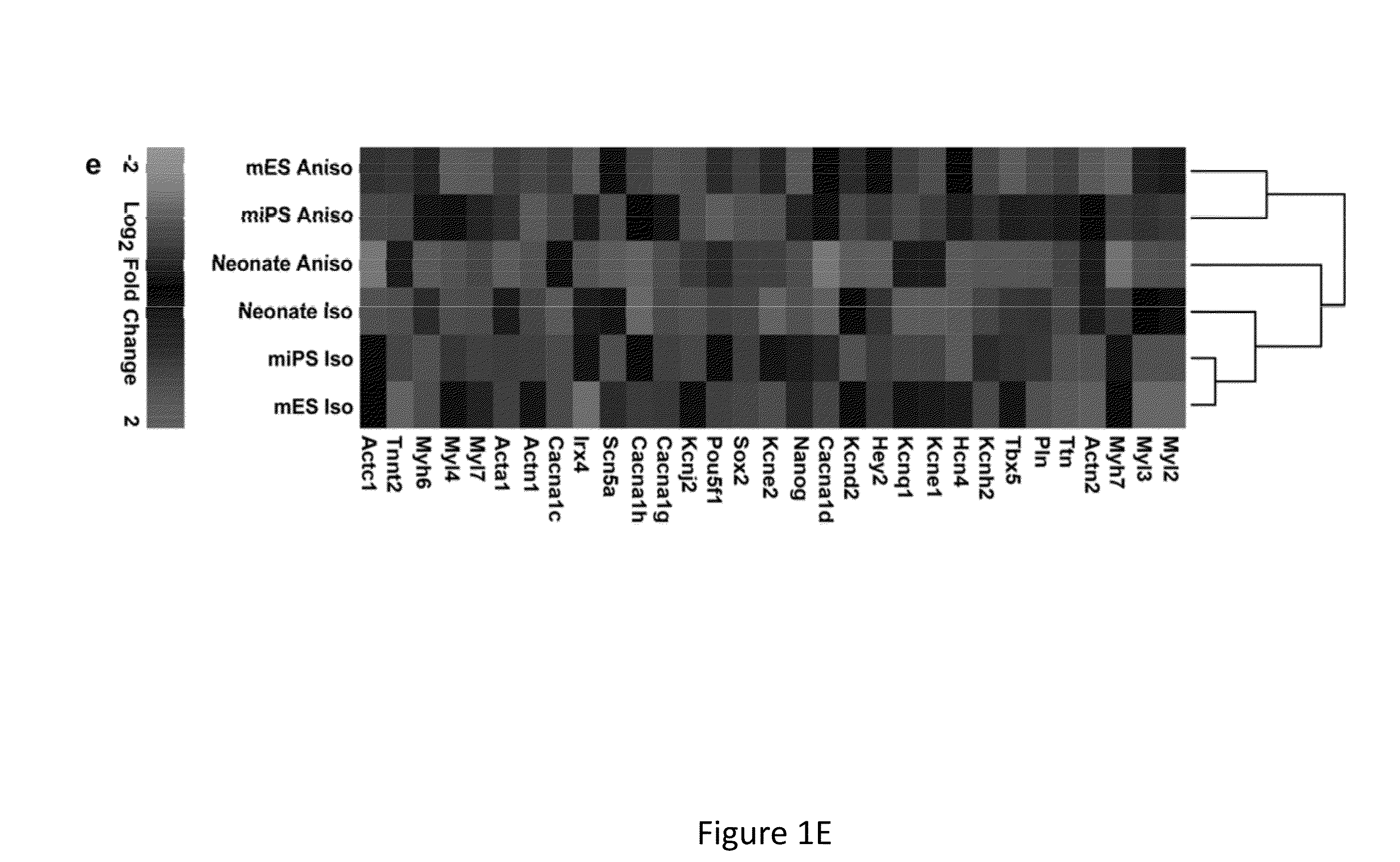System and Method for Determining Quality of Stem Cell Derived Cardiac Myocytes
a stem cell and cardiac myocyte technology, applied in the field of system and method for determining the quality of stem cell-derived cardiac myocytes, can solve the problems of unclear whether the various stem cell-derived myocyte cell lines on the market exhibit comparable performance to one another, or if any of them accurately recapitulates, and achieves the effect of greater similarity
- Summary
- Abstract
- Description
- Claims
- Application Information
AI Technical Summary
Benefits of technology
Problems solved by technology
Method used
Image
Examples
experimental examples
[0048]The invention is now described with reference to the following Examples. These Examples are provided for the purpose of illustration only and the invention should in no way be construed as being limited to these Examples, but rather should be construed to encompass any and all variations which become evident as a result of the teaching provided herein.
[0049]Without further description, it is believed that one of ordinary skill in the art can, using the preceding description and the following illustrative examples, make and utilize the present invention and practice the claimed methods. The following working examples therefore, specifically point out the preferred embodiments of the present invention, and are not to be construed as limiting in any way the remainder of the disclosure.
example 1
Assessment of Stem Cell Derived Myocyte Differentiation
[0050]In order to develop quality assurance standards for assessing stem cell-derived myocyte differentiation, it is necessary to first establish a set of characteristics that reliably define cardiac myocyte identity. In one example such characteristics may include evaluation of form and function that give rise to the contractile properties of cardiac myocytes in the healthy, post-natal heart. In addition to measuring the expression of cardiac biomarker genes (Ng et al., 2010, Am J Physiol Cell Physiol 299:C1234-1249; Bruneau, 2002, Circ Res 90:509-519), the organizational characteristics of the contractile myofibrils (Feinberg et al., 2012, Biomaterials 33:5732-5741), the electrical activity that regulates myofibril contraction (Kleber and Rudy, 2004, Physiol Rev 84:431-488), and the contractile force output of the myofibrils directly (Alford et al., 2010, Biomaterials 31:3613-3621) were also examined. Since human ventricular m...
example 2
Metrics of Cytoskeletal Organization to Identify the Structural Phenotypes of Stem Cell Derived Cardiomyocytes
[0077]As demonstrated in herein, human induced pluripotent stem cell derived myocytes exhibited qualitatively and quantitatively underdeveloped contractile cytoskeletons with respect to murine primary and stem cell derived cardiomyocytes when exposed to in-vivo like experimental conditions. This is consistent with the notion that human stem cell derived cardiomyocytes may require longer time in culture or ad-hoc conditioning to fully mature, and suggests that metrics of cytoskeleton architecture can be utilized to quantitatively monitor this process. Accordingly, in addition to the metric parameters described in Example 1, a new metric of cytoskeletal organization, the sarcomere packing density, has been developed to further distinguish architectural phenotypes in establishment of the quality index used in the system and method of the present invention.
[0078]Demonstrated her...
PUM
 Login to View More
Login to View More Abstract
Description
Claims
Application Information
 Login to View More
Login to View More - R&D
- Intellectual Property
- Life Sciences
- Materials
- Tech Scout
- Unparalleled Data Quality
- Higher Quality Content
- 60% Fewer Hallucinations
Browse by: Latest US Patents, China's latest patents, Technical Efficacy Thesaurus, Application Domain, Technology Topic, Popular Technical Reports.
© 2025 PatSnap. All rights reserved.Legal|Privacy policy|Modern Slavery Act Transparency Statement|Sitemap|About US| Contact US: help@patsnap.com



